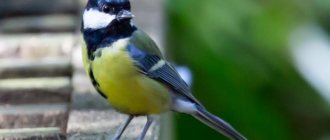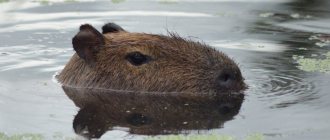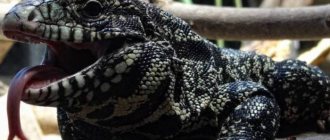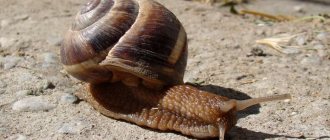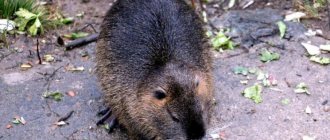The tit is a small forest bird familiar to Russians. The brightly colored, friendly bird is loved by the people; proverbs, sayings, and folk signs are associated with it. Zoological classifications of the tit family include 14 genera (with 60 species and many varieties).
The largest representative of songbirds is the great tit
Tit bird: types, names, photographs of great tit, long-tailed tit, tufted tit, Muscovy tit, puffy tit
The tit is perhaps familiar to each of us, because this bird comes into view more often than many others. Fragile little playful birds jumping from branch to branch - this is exactly how most people imagine a titmouse. However, few people realize that there are a huge number of species of these birds and, seeing many other beautiful birds around us, we do not even suspect that they are also titmouses.
- The tit family, in general, boasts about 65 species of small birds, the mass of which usually does not exceed 25 g, and the body length is most often 150 mm
- This bird lives not only in our latitudes, it is also common in almost all corners of our world
- The most common types of tits include the following: great tit, hanging tit, whiskered tit, tufted tit, blue tit, coal tit, powder tit, Apollo tit.
Now let's talk in more detail about each of the above species of this family.
- Let's start, perhaps, with the great tit, also known as the great tit or grasshopper. This type of titmouse is very beautiful. The back of this bird is light green with yellow tints, the belly is yellow. This bird's distinctive black feature is a black stripe that runs along its belly and chest. The upper part of the head, the sides of the neck, and the neck of this titmouse are painted black, which gives off a bluish sheen in the sun. The sides of the titmouse's head are white. The wings of the large fish are gray, sometimes with a blue tint, and the tail is black.
Great tit
- Hanging tit. The hanging titmouse is the smallest representative of the tit family, because its wing length reaches only 45-55 mm.
- Unfortunately, this tit cannot boast of its color. The bird's body is colored yellowish-gray, giving off greenish in places; overall, this color looks very inconspicuous and inconspicuous.
- Most often this bird can be seen in South-West or South Africa.
- Whiskered tit. Very often, whiskered tits can be found under the name of bearded tit or bearded tit, and all because the adult male of this species has a white throat and a black “beard”. The plumage of these birds has a very beautiful color of light brown, in places with a yellowish tint. The head of the mustachioed tit is colored gray with a blue tint. A distinctive feature of the tail color of these birds (males) is that the tail feathers below are white.
- The female tit does not have a “beard”; its head is colored a warm brown-beige color. The tail feathers below are not white, but beige, milky. Young immature whiskered tits have a color that is close in color to warm beige and yellow.
Whiskered Tit
- Tufted tit. The tufted tit, or as it is also called the grenadier, is a beautiful and interesting bird. A distinctive feature is its crest, which is impossible not to notice even from a distance. It is not difficult to guess that this bird received its name precisely because of the presence of this crest. The entire back of the grenadier is painted in a grayish, brownish color. The crest is colored with small black and white spots, the throat and sides of the neck have black spots. The belly of the tufted tit is white with a yellow tint.
Tufted tit
- Blue tit. Here we come to the description of the most beautiful bird of the tit family. The blue tit has a very unusual bright color, which definitely sets it apart from other birds. The blue tit is a small bird whose plumage is bright blue and yellow. The tit's beak and tail are relatively small; the blue tit itself reaches a length of 10-12 cm. The dorsal part of the tit is colored greenish, but the shade may differ depending on the bird's habitat. The bird's belly is light green with a yellow tint. The blue tit has an azure-colored “cap” on its head, two blue stripes on both sides of its beak, and a blue stripe around its neck. The wings and tail of the bird also have a bluish-blue color.
Blue tit
- Moskovka. This bird can be found under the name black tit, small tit. This bird is reminiscent of a large bird in its color, however, it is significantly smaller in size. The “cap” on the head of the Muscovy is black, the “cheeks” have white spots, the back of the bird is gray with a bluish tint, and the belly and chest are light gray with a light reddish tint. The tail and wings are painted dirty black.
Moskovka
- Puffy . The chickadee is also called the chickadee and marsh tit. This bird does not have a bright, attractive color. The back of the head and the head of this tit are colored black. The back and the entire upper part of the body are distinguished by a light gray color; the abdomen also has a nondescript dirty white color. The wings and tail are most often dark brown.
Puffy
- Apollonovka. The long-tailed tit, also called the Apollo tit, is the smallest bird of all the tits that live in our area. Despite the fact that the Apollo tit is the smallest tit, it boasts a very long and beautiful tail. The head and belly of the long-tailed tit are painted white, the sides of the bird have a barely noticeable pink tint, the wings are most often dark brown or black, and the stepped tail is brown-black.
Male and female: main differences
Male and female tits: main differences photo
Sexual dimorphism in tits is weakly expressed. Females, as a rule, are slightly lighter than males, but in general their color is the same. An interesting feature: the longitudinal black stripe on the belly of birds in males widens towards the tail, while in females, on the contrary, it becomes thinner. The young animals also have slightly different plumage; their color scheme is dominated by olive-brown colors.
Tit: a bird of prey, a migratory bird or not?
First, let's talk about whether the titmouse is a migratory bird. In order to understand this issue, you need to understand why some birds fly away at a certain period of time, while others remain in their homeland.
- The first reason why birds fly away to other habitats is the lack of food. For example, most birds that fly away eat insects and other various foods of animal origin. As you understand, in winter it is extremely difficult to find such food, even if it is possible, and in order to survive in the cold, birds need a lot of food
- The second reason is the cold. Here the animal is completely powerless, because it is naturally not able to change the weather
As for tits, most of them are nomadic birds, because with the onset of cold weather they move from the forests closer to humans. In winter, there is very little food in the forest, so birds move to people in the hope of finding something edible and thus ensuring a “well-fed” winter. Tits are not migratory birds, as they are not particularly sensitive to cold.
Tits are nomadic birds
Now let's talk about the nutrition of these birds:
- Generally speaking, birds of prey are those that hunt in flight and have a body structure that facilitates this, for example, a sharp beak and large claws. It’s clear that our little titmice don’t fit this description.
- It is more appropriate to classify tits as insectivorous birds, since they most often feed on various larvae, forest pests, beetles, spiders, butterflies, and dragonflies. In winter, he consumes more plant foods, since it is very difficult to find insects at this time.
- It would seem that everything is clear, the tit is an exclusively insectivorous bird, but there is one “but”. Scientists have proven that some species of tits sometimes hunt pipistrelle bats (small bats); as a rule, they hunt them at a time when the mice have not yet fully awakened from hibernation. Having killed its prey, for example, a great tit, pecks out its brain
Scientific classification
- Domain: eukaryotes
- Subkingdom: eumetazoans
- Kingdom: Animals
- No rank: bilaterally symmetrical
- No rank: deuterostomes
- Type: chordates
- Subphylum: vertebrates
- Infratype: gnathostomes
- Superclass: quadrupeds
- Class: birds
- Order: passerines
- Suborder: song passerines
- Infraorder: Passerida
- Superfamily: Sylvioidea
- Family: tits
- Genus: tits
Characteristics and behavior of tits: description for children
Tits most often appear to us as active, fast, restless birds, and this is what they really are.
- The hanging titmouse is a very quiet bird that always behaves neatly and silently. Despite this, she is very dexterous in her movements: she can very quickly and quietly inspect tree branches and flowers, in which she looks for bugs for food.
- The long-tailed tit is very sociable and is rarely very afraid of people, so very often you can find such a bird living in someone’s house. Apollonovka differs from many other birds in that it can sing very beautifully. That is why poultry farmers who want to teach other birds to sing take the long-tailed tit as a teacher.
Titmouse
- Blue tits are frisky, active birds that love to jump from branch to branch, while hanging from the branch upside down from time to time. This titmouse is not very afraid of people, so it can often be seen near residential buildings. By nature, the blue tit is not a very good flyer, but uses its legs to move very quickly. This bird can also be called curious, as it loves to “stick its nose” into any crack or hole in the tree.
- The great tit is a very fast, mobile bird. Loves to jump on branches, hanging upside down from them. The great tit flies well, but in order to fly, it flaps its wings frequently. Most often, such a bird can be seen in a flock with other tits.
- The Muscovite is a restless bird that will never sit in one place for a long time. The titmouse flies quickly and well, and while searching for food it also hangs upside down by branches.
- The tufted tit also boasts of its activity and restlessness. Most often it can be seen in the crown of trees, where the bird hides from prying eyes.
As you can see, all titmice are very mobile and active birds, which rarely just sit on tree branches.
Where do tits spend the night in the city in winter, and where do they fly in summer?
You have probably noticed that most often titmouses can be seen in winter and late autumn, when the first snow and frosts appear outside. However, where do these little birds live in the summer?
- Tits are inhabitants of forests and various forest belts. At favorable times, that is, in summer and spring, they are there because they simply do not need to fly closer to people. In the forest they feel very protected, and they have much more food there than in other places.
- With the onset of winter and cold weather, the picture completely changes. There are fewer insects in the forests, and over time they disappear altogether. This is where titmice wander closer to people and their homes, because they know that here they have a better chance of finding food and overwintering.
Wintering of tits
- Tits spend the night in winter in places where they will be warm and least windy. Various hollows, cracks in buildings, and birdhouses are good places for these birds to spend the night; you can also see tits under the roofs of houses. Most often, birds spend the night in flocks, huddled closely together, because this way they are much warmer.
Family life
The chirping sounds that can be heard in early spring are usually made by males. They love to huddle in parks and squares, gardens and vegetable gardens . It is in the spring that tits get to know each other and set up their nests. This responsibility lies with females. For construction they use moss and wool, as well as grass and vines.
These items are needed for bedding in bird houses. Chickadees can hatch up to ten young. After 20 days, the young individuals fly away from home. For some time they are under the control of their parents, and after that the newborns fly away to live independently.
Where does the tit live and nest?
As it was said earlier, the tit mainly lives in forests and forest belts, because it is in such an area that it can feel safe and without problems find food for itself in a favorable period of time.
There is another reason why the tit lives for a certain period of time in the forest - the need to reproduce.
- Tits nest in early spring, at this time it is still quite cold and chilly, so their nests should be as warm and comfortable as possible for future chicks. These birds can also nest in mid-summer.
- These birds most often make nests in tree hollows; it is much less common to see a tit’s nest directly between the branches of a tree, in any shelters, crevices, holes in buildings at a height of 3-6 m.
- As a rule, nests are made of wool and all kinds of feathers; twigs, fluff and moss are also used, and if you are lucky enough to find them, then cotton wool.
What does a titmouse eat in the wild in summer and winter?
Tits are insectivorous birds and feed on the following insects:
- Invertebrates and their larvae
- Caterpillars of various butterflies, dragonflies
- Spiders, beetles, including weevils
- Midges, flies, mosquitoes
- The titmouse is not averse to eating aphids
- Ants and bees can also make up a bird's diet.
- With pincers
- Sometimes a tit can eat cockroaches and grasshoppers
This is the diet of the titmouse mainly in the summer. In the spring, some species of tits can hunt dwarf pipistrelles that have not awakened from hibernation.
What do titmouses eat?
Starting in autumn and including winter, birds begin to eat mainly the following food:
- Hazel
- Grain of corn, wheat, oats
- Pine and linden seeds
- Fruits of lilac, rowan, blueberry, sunflower
- Sometimes they can diversify their diet with carrion
It must be said that such species of tits as blue tits and black tits take care of their food in the fall and stock up on the necessary products - seeds, grains. Other species of tits most often feed on other people's reserves, which they are very good at finding.
Natural habitats
It is known that the gray tit is represented by 13 subspecies, such as:
- Pc ambiguus, a subspecies found on the Malacca Peninsula and the island of Sumatra.
- Pc caschmirensis, distinguished by the presence of a gray spot on the back of the head. The habitat of this subspecies is represented by the northeast of Afghanistan, the north of Pakistan and the northwest of India.
- Pc cinereus Vieillot is a subspecies common on the island of Java, as well as on the Lesser Sunda Islands.
- Pc decolorans Koelz is found in the northwestern part of Afghanistan, as well as the northwestern part of Pakistan.
- Pc hainanus EJO Hartert is a subspecies native to Hainan Island.
- Pc intermedius Zarudny is a subspecies representing the territories of northeastern Iran and northwestern Turkmenistan.
- Pc mahrattarum EJO Hartert is a subspecies common in the northwestern part of India, as well as the island of Sri Lanka.
- Pc planorum EJO Hartert is distributed in northern India, Nepal, Bhutan, Bangladesh, central and western Myanmar.
- Pc sarawacensis Slater is a subspecies found on the island of Kalimantan.
- Pc stupae Koelz is found in western, central as well as northeastern parts of India.
- c. templorum Meyer de Schauensee. The central and western parts of Thailand, as well as southern Indochina, are represented by this subspecies.
- Pc vauriei Ripley is a subspecies whose habitat is represented by northeast India.
- Pc ziaratensis Whistler - this subspecies can be found in the south and center of Afghanistan, as well as in the west of Pakistan.
The great tit is distributed throughout almost the entire Middle East, as well as in Europe, North and Central Asia, including some areas of North Africa.
The great tit is represented by 15 subspecies, which are distinguished by a wider habitat. For example:
- Pm raphrodite is a subspecies found in southern Italy, southern Greece, islands located in the Aegean Sea and Cyprus.
- Pm blanfordi is found in the northern territories of Iraq, northern Afghanistan, and the southern central regions of Kazakhstan and Uzbekistan.
- Pm bokharensis - this subspecies is found in the territory of Turkmenistan, in the north of Afghanistan, as well as in the north of the central territories of Iran.
- PM corsus. A subspecies that inhabits the territory of Portugal, southern Spain and Corsica.
- PM ecki. Found in Sardinia.
- Pm excesus - lives in northwestern Africa, western Morocco and northwestern Tunisia.
- Pm ferghanensis is found in Tajikistan, Kyrgyzstan and western China.
- Pm kapustini is distributed in the southeast of Kazakhstan (Dzhungar Alatau), in the northwest of China and Mongolia, in Transbaikalia, in Primorye, including the north, up to the shores of the Sea of Okhotsk.
- Pm karelini is a subspecies distributed in southeastern Azerbaijan and northwestern Iran.
- Pm major is a typical representative of the European continent, Spain, the Balkans, northern Italy, Siberia, Asia Minor, the Caucasus, and Azerbaijan.
- Pm mallorcae is widespread in the Bamar Islands.
- Pm newtoni is a subspecies whose habitat is confined to the British Isles, the Netherlands, Belgium, as well as the northwestern regions of France.
- Pm niethammeri is found in the wild on the island of Crete.
- Pm terraesanctae, a species that lives in the territories of Lebanon, Syria, Israel, Jordan, as well as the northeastern territories of Egypt.
- Pm turkestanicus is a subspecies found in the southeastern part of Kazakhstan, as well as in the southwestern part of Mongolia.
Representatives of various species and subspecies choose areas in nature for their life activities, located within forests, in open areas and on the edges, as well as near natural reservoirs.
There are 9 subspecies of the Eastern (Japanese) tit. For example:
- Pm amamiensis is a subspecies found in the northern Ryukyu Islands.
- PM commixtus. The habitat of this subspecies is southern China and northern Vietnam.
- Pm dageletensis. A subspecies that is found on the Ulleungdo Islands, close to Korea.
- PM kagoshimae. A subspecies inhabiting the southern part of Kyushu and the Goto Islands.
- PM minor. It is found in eastern Siberia, southern Sakhalin, as well as northeastern China, Korea and Japan.
- Pm nigriloris. The subspecies lives in the south of the Ryukyu Islands.
- m. nubiсolus - subspecies lives in eastern Myanmar, northern Thailand and northwestern Indochina.
- m. okinawae - found in the center of the Ryukyu Islands.
- PM tibetanus. The subspecies is found in southern Tibet, southwestern China and northern Myanmar.
The habitat of the green-backed tit includes the territory of Bangladesh and Bhutan, the territory of China and India, Nepal, Pakistan, Thailand and Vietnam. This species of tit lives in boreal forests and woodlands of temperate latitudes, subtropics and tropical rainforests.
What to feed tits in winter?
Since titmice fly to our homes and gardens in winter, we often ask ourselves: “What should we feed these little frisky birds?” Now we will tell you about the food that can and should be given to tits. Why is it necessary? Because in the cold season it is very difficult for these birds to provide themselves with the required amount of food, and we, people, can easily help them with this, thereby increasing their chances of successfully overwintering.
So, you can feed tits:
- Cereals, for example, millet, buckwheat. These cereals should be given raw, because porridge prepared from cereals will freeze in the cold and turn into ice lumps. However, it is worth saying that opinions differ regarding millet. Some believe that millet is an excellent type of feed for birds, while others are categorically against such food for birds, because millet swells very much in the stomach.
- Meat products. Boiled lean, unsalted meat and unsalted lard will definitely please tits, especially in winter, when they so need nutritious food. Despite the fact that many people recommend giving tits sausage, we recommend refraining from this idea.
- Nuts. These can be the well-known walnuts, which are very nutritious and healthy. You can also feed the birds other nuts.
Feeding tits in winter
- Sunflower seeds and pumpkin seeds.
- Bread crumbs.
- Apples, watermelon seeds, which are prepared in advance, washed and dried.
- Rowan berries, which are also good for feeding tits.
Is it possible and how to feed tits with lard, fried and raw seeds, and millet?
If we talk about feeding these birds by people, then seeds, millet and lard are the main products of their diet. However, this does not mean that you just need to throw these foods out the window and be happy for your good deed and for the tits that they have something to eat. If you want to do a good deed, do it right.
- Under no circumstances should you give salted lard to tits, as it can cause problems with the gastrointestinal tract and even lead to death. Moreover, think logically, there are no salty foods in nature for tits, that is, their body is not adapted to eating and digesting such food. Fresh lard is great for tits to eat
- Millet should also be given to titmice in the winter, but it should be given raw
- The seeds will definitely please the birds, but you can’t fry them, everything is the same as with salted lard, so buy fresh seeds and be happy
Tits eat lard
And now we present to your attention an excellent mixture of food for feeding tits:
- Mix sunflower seeds, pumpkin seeds, watermelon seeds in equal proportions, add a few peeled walnuts, bread crumbs, if available, you can add rowan berries
Folk signs
The Russian sign “a tit is knocking on the window” is interpreted differently by people. Most often, a sign is considered good, foreshadowing:
- money to the house;
- good news;
- long-awaited guests;
- success in work, children's studies;
- good changes (wedding, birth of a healthy child).
It is considered a particularly good and close omen if the bird chirps provocatively.
Unpleasant interpretations of omens include news of the imminent death of loved ones, or the serious illness of the elderly. Modern city dwellers rarely encounter birds knocking on their windows; villagers prefer to believe in good omens.
How long does a tit live?: life expectancy in the wild and in a cage
Tits are very sociable birds, very often they live very close to our homes, which is why such a bird can often be seen in someone’s home, as a pet.
Despite the fact that the titmouse almost always perfectly adapts to new living conditions in the house, this bird, in principle, is not suitable for keeping at home - this is how nature has established it. It would seem, based on what has been said, that a tit in the wild lives a much longer life than a tit in captivity, but no, everything is completely different.
- In nature, that is, in the forest, a titmouse can live a very short life. The bird lives approximately from 1.5 to 3 years. 1 case was recorded when a tit lived about 10 years
- While at home, in warmth and care, a tit can live about 15 years
Singing
Tit bird
In the pleasant chirping of tits, experts distinguish more than 40 different sound combinations. Males especially love to sing and chirp almost all year round, calming down a little only in winter.
Their song consists of loud “tsi-tsi-tsi-pi”, “in-chi-in-chi”, “pin-pin-chrrrrzh”, “zin-zi-ver”, “zin-zin” and in general very diverse with endless modulations and a variety of intonations.
Does the tit benefit humans?
Many people do not attach much importance to these birds, because all their work is not particularly visible to us humans with the naked eye. Despite this, the benefits of tits are colossal, because these small nimble birds are real pest fighters and their larvae.
- Just imagine, this inconspicuous bird can fly out of the nest about 300 times in 1 day in order to find food for itself and its chicks
- A gray flycatcher can fly out of its nest 500 times
- During these 300-500 flights, the bird brings about 300-600 different insects to the nest
- Even in a cold winter, the titmouse saves trees and the future harvest, because under the bark of trees it looks for pests and eats them
The tit saves trees even in winter
“Does the tit benefit humans?” - definitely brings and this benefit is very great, so people should also treat birds with respect and, if possible, feed them.
Interesting facts about titmice: examples
Despite the fact that titmice live very close to people, we know very little, if not nothing, about them. Therefore, we invite you to familiarize yourself with the most interesting facts about these birds.
- Tits have long been considered incredibly useful birds for humans, so even in Rus' a decree was issued stating that for the extermination of tits, a person will face severe punishment in the form of a fine.
- Despite the fact that in our area the most common is only 1 species of tit, the great tit, there are about 65 species in nature.
- Many people think that the bird got its name because of the blue color of its plumage, but tits rarely have this color in color and this is surprising. However, in fact, the titmouse got its name because of the sounds it makes; if you listen closely, you can hear “si-sin-si,” hence the tit
Tits: interesting facts
- During the period of feeding the chicks, the tit gives them food about 35 times per hour
- Most tits are excellent flyers, despite the fact that they flap their wings very rarely, they fly very quickly and briskly
- Tits are very sociable birds and can be tamed if desired.
- Almost all tits build nests in hollowed-out hollows, since they themselves do not know how to do this
Tits are incredibly beautiful and useful birds for humans and nature, which is why we must make every effort to ensure that they are comfortable in the winter and that they are not hungry.
